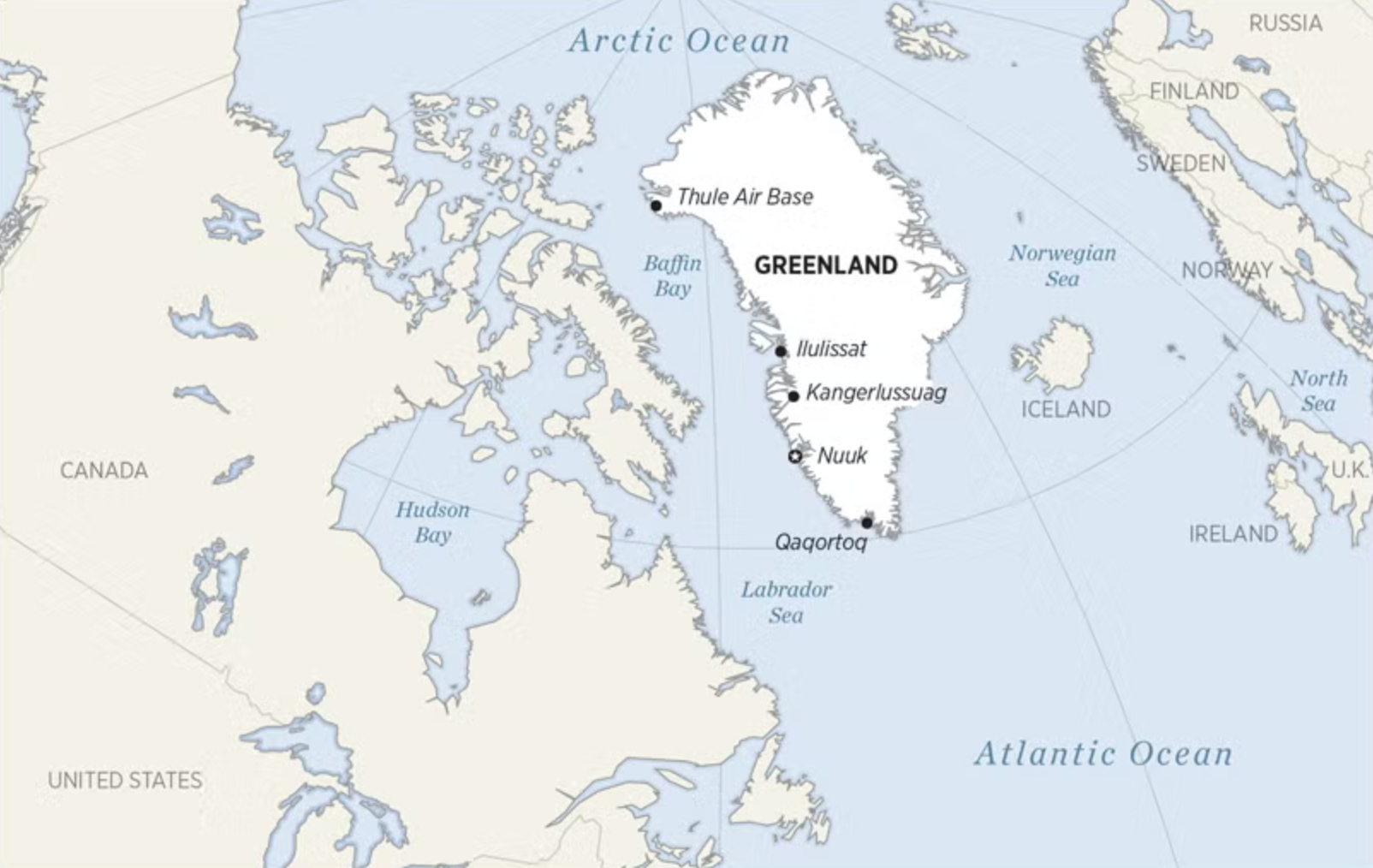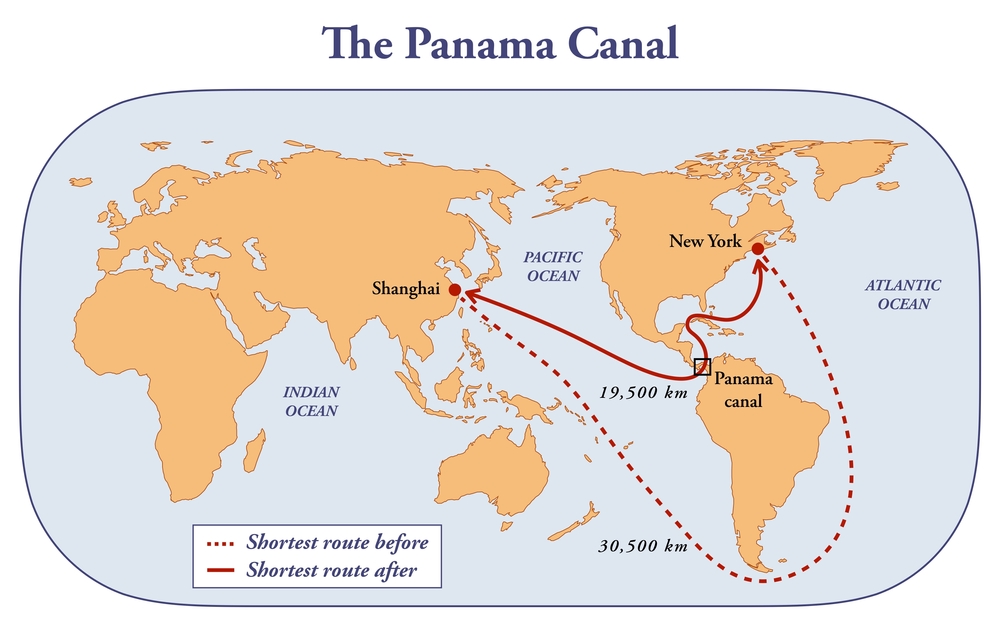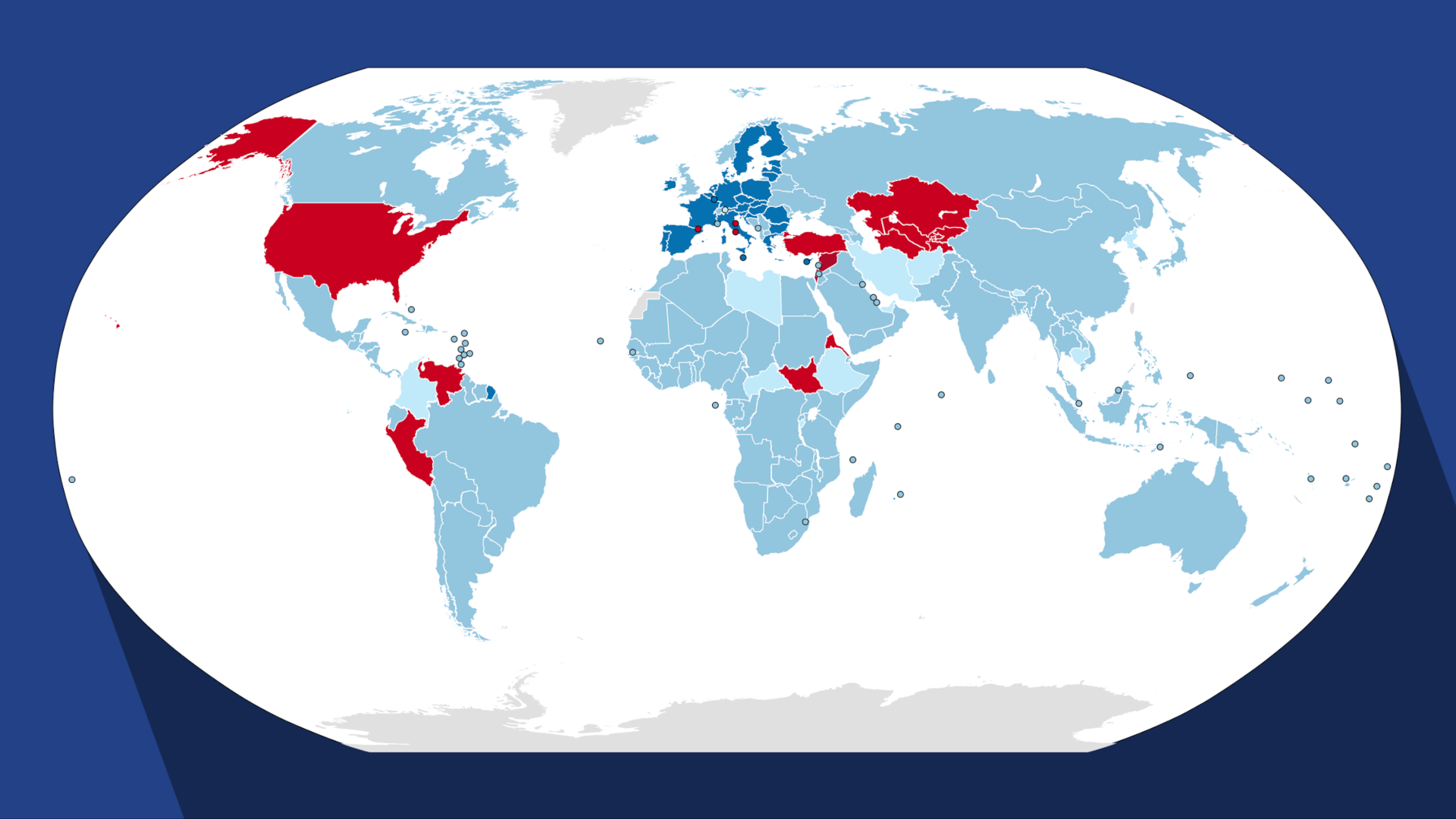Chokepoints and Cold Fronts: Trump’s Bold Maritime Strategy in a New Great Game

From Greenland to Panama: Trump’s Maritime Ambitions and Global Power Struggles.
Opinion – Editorial
In the long arc of history, the ambitions of great powers have often been inscribed upon the sea. From the maritime empires of Spain, Portugal, and Britain to the naval rivalries of the Cold War, control over strategic waterways has been a defining element of global supremacy. Now, as geopolitical tensions surge in an increasingly multipolar world, the United States finds itself at a critical juncture. Under the leadership of Donald Trump, Washington's renewed interest in Greenland and Panama is more than a diplomatic oddity, it is a calculated move in the great game of maritime dominance.
Greenland and Panama in the Global Chessboard
At first glance, Trump's desire to "buy" Greenland and his administration's pressure on Panama may seem like relics of a bygone era of territorial expansion. Yet, beneath the surface, these maneuvers reflect a profound strategic calculus. The Arctic and the Panama Canal are two of the world's most vital maritime corridors, each playing a crucial role in global trade, military logistics, and resource extraction.
Greenland is not merely an ice-covered expanse on the world map; it is a gateway to the Arctic, a region whose significance has skyrocketed as climate change reshapes global shipping lanes. With Arctic ice melting at an unprecedented rate, new passages are emerging that promise to revolutionise trade routes between Europe, North America, and Asia. China, recognising this opportunity, has aggressively expanded its presence in the Arctic, partnering with Russia to develop northern shipping routes and investing in Greenland's infrastructure.

+ Sea Power and American Interests in the Western Pacific, by David C. Gompert (Rand Corporation)
+ The Geopolitical Significance of Greenland - Why does President Trump want Greenland?
+ The Dawn of a New Era: Trump’s Return to Power
For the United States, allowing Beijing to gain a foothold in the Arctic is strategically untenable. Trump’s interest in purchasing Greenland, unprecedented in modern diplomacy, strained relations with Denmark. While Greenland is part of the Kingdom of Denmark, it has extensive home rule, meaning any transaction would require Greenlandic authorities' consent. Though initially dismissed as absurd, Trump’s proposal reflected deeper strategic concerns, including containing China’s Arctic expansion, securing access to rare-earth minerals, and bolstering U.S. military installations, notably Thule Air Base.
Beyond Greenland, the Trump administration views Canada’s Arctic claims as another hurdle to Washington’s ambitions in the region. Trump has also hinted at his desire to make Canada the "51st state," provoking strong reactions from Ottawa. Prime Minister Justin Trudeau has underscored Canada’s commitment to Arctic sovereignty, particularly regarding the Northwest Passage, which Canada claims as internal waters while Washington views it as an international strait. As Arctic ice melts and new shipping routes emerge, these disputes add yet another layer of complexity to an already fraught regional landscape.
Greenland’s mineral wealth, particularly rare-earth elements, is another significant factor. China currently dominates global rare-earth processing, making Greenland an attractive prospect for securing alternative sources. The competition over these critical resources underscores how the Arctic is rapidly becoming a focal point for great-power rivalry.
Panama: The Chokepoint of Global Trade
If Greenland represents the future of maritime routes, Panama embodies the present. The Panama Canal remains one of the world’s most indispensable waterways, facilitating nearly 5% of global trade. However, its control has become a point of contention between Washington and Beijing. Since the late 1990s, when the United States fully transferred control of the canal to Panama under the Torrijos–Carter Treaties, Chinese companies have gained significant influence, particularly through the management of key ports at either end of the canal.
One of the most prominent players is Hong Kong–based CK Hutchison Holdings (formerly Hutchison Whampoa), a conglomerate owned by billionaire Li Ka-shing. It has operated two of the canal’s five ports, Balboa and Cristóbal, since winning the tender in 1997. American officials, including Secretary of State Marco Rubio, argue that such a Chinese-linked firm controlling the canal’s entry and exit points poses a national security risk, as Beijing could theoretically disrupt transit at any time. Under growing U.S. pressure, Panama’s government initially indicated it might audit Hutchison’s contracts, but the more recent development is a lawsuit filed by two Panamanian lawyers in the country’s Supreme Court claiming that the port concession is unconstitutional. Should the court agree to hear the case and side with the plaintiffs, the contracts could be revoked, an outcome that would align with Trump’s broader campaign to curtail Beijing’s footprint in Central America.

Trump’s assertion that Panama's strategic assets are falling under Chinese sway has prompted aggressive American responses. Economic pressure, diplomatic coercion, and potential sanctions have all been floated as means to wrest control from Beijing. Yet Panama is not the only regional actor being courted by Beijing. Across Latin America, countries such as Ecuador, Chile, and Brazil have deepened economic ties with China through infrastructure projects, raw material exports, and technological collaboration. These governments often benefit from Chinese investment without the political strings or austerity measures that Western institutions might demand, making Beijing an appealing partner.
For Washington, the Panama Canal’s strategic import remains paramount. Roughly 40% of U.S. container trade passes through its locks, and any foreign influence perceived to threaten unimpeded transit strikes at the heart of America’s global trade and national security interests.
These ambitions signal a fundamental shift in global power dynamics, one that echoes the struggles of past empires. Throughout history, great powers have wielded control over maritime choke points to project influence and protect trade routes. The British Empire’s naval doctrine provides a clear case study. Britain’s control of Gibraltar granted it a strategic vantage point at the entrance to the Mediterranean, while its stake in the Suez Canal allowed for the rapid movement of goods between Europe and Asia. The Suez Crisis of 1956 underscored the lengths to which states would go to maintain control over such vital trade arteries.
Similarly, the Panama Canal today plays a comparable role in global commerce. Much like how disruptions in Suez have historically impacted world trade, any slowdown in Panama could have cascading economic effects. Washington’s renewed interest in securing maritime choke points mirrors past empires’ strategies, reinforcing the idea that controlling trade routes remains a cornerstone of great-power competition.
The U.S.–China competition for influence in these waterways echoes the Cold War’s naval rivalries. During that era, maritime dominance was crucial, as demonstrated by standoffs such as the Cuban Missile Crisis and Arctic submarine confrontations. Today, just as Soviet expansion was countered through naval positioning, Washington seeks to contain Chinese influence through control over key maritime corridors.
Implications for NATO, the EU, and the Global Order
The potential consequences of these moves are profound. Within NATO, Trump’s overt pressure on Denmark regarding Greenland has already strained transatlantic ties. Historically, European powers have viewed American leadership as a stabilising force, but aggressive territorial ambitions risk eroding trust. If the United States is willing to exert pressure on a NATO ally over a territorial claim, what does this signal for future cooperation?
Similarly, Panama's predicament highlights the fragility of American influence in Latin America. While Washington still exerts substantial economic leverage, China's patient, investment-driven strategy has won it allies across the region. If the United States resorts to economic or military coercion, it risks alienating Latin American partners, potentially driving them closer to Beijing.
There is a striking paradox in Washington's rhetoric. The United States has vocally condemned Russian aggression in Ukraine and China's claims over Taiwan, framing them as violations of sovereign rights. Yet, its approach to Greenland and Panama raises uncomfortable questions. If sovereignty is sacrosanct, then why should Denmark or Panama be expected to yield to American demands?
Many Panamanians, like Denmark’s leaders, have insisted they will not cede their territory, but the question remains whether they could resist if the United States resorted to force. Washington has turned the use of threats and military power into a standard policy tool over many decades, and the U.S. already maintains a military presence in Greenland through Thule Air Base. With Greenland’s population numbering fewer than 60,000 people, some worry that an American takeover could happen with little direct conflict, and Europe might be unable, or unwilling, to intervene. The European Union is plagued by internal divisions and unlikely to mount a unified defense against its key NATO ally, should the United States pursue a more aggressive policy in Greenland.
Panama presents a parallel dilemma. Although Panamanians reject the idea of any external power seizing the canal, the Trump administration’s rhetoric, echoed by officials like Secretary of State Marco Rubio, who made Panama his first foreign visit, signals that “all options are on the table,” including military intervention. The fallout from a forcible takeover of Panama or Greenland would likely be far more severe than the United States anticipates. European support for the transatlantic alliance could collapse, and NATO cohesion would face grave strain. In Latin America, deep-seated resentments over U.S. “imperialist” behavior could intensify, fuelling anti-American sentiment.
Should the United States take what it wants by raw power, how can it condemn similar moves by other great powers? Critics warn that this would unleash a dangerous era of “might makes right,” one in which global norms, institutions, and diplomacy are increasingly disregarded in favor of raw force.
International law further complicates these disputes. The U.N. Convention on the Law of the Sea (UNCLOS) is often cited in Arctic sovereignty debates. However, Washington’s stance on UNCLOS—signing but never ratifying it—undermines its credibility when invoking maritime law in disputes with rivals. This inconsistency further fuels accusations of double standards in U.S. foreign policy.

Map of parties to the United Nations Convention on the Law of the Sea. 28 February 2015. Wikipedia Common.
Ultimately, Trump's ambitions regarding Greenland and Panama are symptomatic of a broader transformation in global politics. As power becomes more diffuse and great powers vie for strategic advantage, maritime control is emerging as a key battleground. The United States, faced with a rising China and a resurgent Russia, is falling back on historical patterns: securing critical trade routes, denying adversaries access to strategic waterways, and reaffirming its role as the world's premier naval power.
However, this approach is not without risk. If Washington miscalculates, it could find itself entangled in conflicts that weaken its alliances and accelerate its relative decline. If it succeeds, it will solidify its dominance over the world's seas, at least for now.
As the world watches these developments unfold, one thing is clear: the struggle for the seas is far from over. In an age of shifting alliances and emerging powers, maritime supremacy remains, as it always has been, the key to global influence.